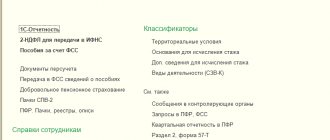What is the residual shelf life, and why do customers specify requirements for it when making some purchases under 44-FZ? Let us immediately make a reservation that both customers and suppliers should pay close attention to this indicator. An incorrectly entered value will result in failure of the auction or termination of the contract.
Young and inexperienced customer specialists often make mistakes in this regard, as they get carried away with writing down the characteristics of the procurement object when preparing the technical specifications. This indicator is very important and its significance should not be underestimated.
Some people think that the winning bidder will supply fresh produce by default, while others rely on the integrity of the supplier. Sooner or later, they all face the problem of receiving a product whose shelf life is coming to an end.
Content:
1. Remaining shelf life: what does it mean? 1.1 For medicines 1.2 For food 2. What types are there? 3. How to correctly indicate the remaining shelf life in the notice and documentation?
Remaining shelf life: what does it mean?
The remaining shelf life of a product (hereinafter referred to as RSHT) is the period of time during which the product retains its original qualities and consumer properties. This metric is typical for food products, medical devices, medicines and some other product groups.
For some categories of goods, it is more correct to say “service life” rather than “expiration date”, but not categorically, because these concepts are synonymous.
OSHT cannot be installed for any equipment, such as medical equipment. In relation to this type of goods, the concept of “residual shelf life” does not apply. The equipment has a warranty period, a supplier's warranty and a manufacturer's warranty. It would also be incorrect to set a residual shelf life for paper products.
The requirement for the shelf life of goods purchased under 44-FZ must be reasonable and justified , which the customer (his responsible person, of course) must adhere to during its formulation. In accordance with 44-FZ, the requirement will be such if the shelf life fully corresponds to the time of its use/consumption. This is where the concept of “remaining shelf life of the product” came from, which is important for the customer.
1.1 For medicines
Medicines that are produced and sold in Russia deserve special attention. In accordance with 61-FZ, they must undergo state registration, and this measure is strictly mandatory.
During the registration of medicines, instructions are developed for them, which prescribes the shelf life of the drug and notes the impossibility of its use after this period. Another important point is that medicinal products must be stored according to the rules approved by the Ministry of Health and Social Development in Order No. 706-n.
Important point! Medicines from different manufacturers that contain the same active ingredient, and sometimes even have the same name, may have different expiration dates.
1.2 For food
OSG for food products is mentioned in paragraph 1 of Article 16 of 29-FZ, which states what it means if the shelf life of products has passed:
- their quality, original taste and beneficial properties deteriorate;
- pose a danger to human health due to the harmful chemical reactions occurring in them;
- become unusable.
By analogy with medicines for food, this criterion must be reflected in the technical documentation. Moreover, drafts of such papers are checked by SanPin for compliance with approved rules.
If the shelf life has been increased, the manufacturer is obliged to provide documents justifying such changes to the SES of the Russian Federation.
Remaining shelf life at the time of delivery of food products under 44 Federal Laws
This period of time is established in cases where some quality characteristics of the product have been lost. For example, due to violation of storage conditions.
Then the product is put up for auction, sold in accordance with the percentage of the remaining shelf life. As a rule, it is up to 80%.
You should be aware that, despite these laws, it is not advisable to indicate the remaining shelf life as a percentage.
It is also worth remembering about products such as honey. Officially, the shelf life of honey is one year, but this only applies to its medicinal properties. The taste qualities remain virtually unchanged, which is what unscrupulous sellers take advantage of.
Rules and terms of food storage
All products are divided into three categories. In accordance with this, the time of possible consumption of food products varies:
- especially perishable - the shelf life of which ranges from 6 to 72 hours. Such products should be kept at a cold temperature, maximum +6°C;
- perishable – the storage temperature of which also does not exceed +6°C, but the period of use ranges from 3 to 30 days;
- non-perishable - allowed to be stored for more than a month.
Shelf life of food products according to GOST
The period of possible use of food products depends on the category they belong to. Let's look at each group in detail.
Particularly perishable:
- dairy products (maximum – 36 hours);
- meat products (up to 48 hours);
- frozen fish (up to 48 hours) and chilled (up to 24 hours) at a temperature of 0 to -2°C;
- cakes (up to 72 hours);
- dressed salads (up to 12 hours);
- cakes (maximum – 36 hours).
An example of a particularly perishable product is eggs. And you can read about the shelf life of boiled eggs (as well as raw ones) here.
Perishable:
- baked milk (up to 5 days);
- cheese (maximum – 5 days);
- boiled sausage (no more than 10 days);
- temperature-treated cottage cheese (up to 5 days).
Non-perishables include:
- canned food;
- pasta;
- cereals;
- caramel;
- some types of vegetables;
- dry mixtures.
All listed numbers are typical for products whose packaging was not damaged during the export process.
How to determine the expiration date of food?
The period of possible use of the product is determined in accordance with the date indicated on the product packaging. The moment of the beginning of acceptable use is the day of production itself.
If the finished product consists of several components, then the storage time is determined depending on the specific dates for the possible use of these components.
For those interested, here is information about the expiration dates of cigarettes in a closed pack.
What types are there?
There are two types of expiration dates:
- a specific date after which the product becomes unfit for consumption. Take milk in a soft bag, which is sold in grocery stores. Most often, its shelf life is 7 days. Therefore, the manufacturer indicates a specific time period, for example: “12/20/20 – 12/27/20”. Those. from December 28, the product will be expired;
- the time period during which a product (product) can be used or consumed. For example, on a package of dumplings. In this case, the countdown must be carried out from the date of manufacture.
Speaking about government procurement, the customer’s task is to determine how long the purchased product will be used/consumed and accurately formulate the requirement for the shelf life so that the product is suitable for the required amount of time after the auction has taken place and delivery has been made.
For example, a customer placed a purchase notice in the Unified Information System for the supply of butter for a children's sanatorium. Suppliers have 14 days to submit applications. Once the winner is determined, the goods must be delivered within 14 days according to the documentation. The product is planned to be used within 2 months. Using the method of adding dates, we understand that, at a minimum, the shelf life of butter should be 3 months (14 days + 14 days + 2 months). Moreover, after delivery, the product must be suitable for another 2 months.
How to correctly indicate the remaining shelf life of a product?
Based on the principle of reasonableness and validity of the requirement, OSGT can be specified in 2 ways:
- the remainder of the shelf life of the total period in the form of a percentage (for example, at least 60% of the shelf life established by the manufacturer);
- in the form of a certain period of time (for example, at least 30 days from the date of delivery of the goods).
Important point! Just a few years ago, both of these options were considered correct, but today regulatory agencies have come to the conclusion that the requirement for a shelf life in the form of a percentage is considered incorrect and limits competition.
Based on the practice of the FAS, customers have stopped indicating OSGT as a percentage, but use exclusively a specific time period. In this way, they have reduced the number of complaints from dissatisfied suppliers and unnecessary litigation with regulatory authorities. This method seems to be the most reasonable, since it is based on the customer’s planning for the future use of the purchased product.
What was the dissatisfaction of suppliers in cases where the OSGT was indicated as a percentage? Let's look at it with an example.
Suppose the customer specifies that the remaining shelf life of the product must be at least 70% of the shelf life established by the manufacturer.
Supplier No. 1 is ready to offer a product with a shelf life of 5 years, and Supplier No. 2 – with a shelf life of 2 years. That is, at the time of consideration of applications from bidders, the residual shelf life of the first product will be 3.5 years, while for the second product this period will be 16.8 months.
This distribution of forces was incorrect and significantly infringed on the interests of Supplier No. 2. Therefore, it was accepted that the OSGT should be expressed in a specific period of time (day, month, year).
This point of view is shared by the Ministry of Economic Development in its Letter dated September 4, 2015 No. OG-D28-11718 (regarding food products):
And also the FAS in its Letter dated May 24, 2021 IA/34601/17 (regarding medical devices):
Best before date
Let's look at how accounting for expiration dates is implemented in the Forecast NOW! software product. The expiration date is set for each product in each warehouse. “Expiration date, days” , located in the “Parameters” , “Basic” , is responsible for this .
For each product that has an expiration date, we set the number of days when it must be sold. This may not be the actual expiration date declared by the supplier, but a little less.
If 2 days before the expiration date it is no longer possible to sell the product, then set the value of the “Expiration date, days” to 2 days less. If such a period occurs much earlier, for example, with a remaining shelf life of 40%, and it is unacceptable to ship the goods to customers, then we set this figure in the program. Where is this parameter involved and in what calculations is it used?
Let’s go to the “Analysis” , “Service Level” to calculate the optimal inventory taking into account the expiration date. The system will analyze possible losses from perishable goods. Set the expiration date and click the “Perform analysis” . By default, the system takes into account losses from the write-off of potential products and sets the level of service at which the total losses will be minimal.
To find out the losses for a particular volume of reserves, click the “Decipher” .
The program will display a demand analysis table. Let's calculate losses for each storage volume that is potentially sold during the specified period. If the shelf life is too long, and the order period is a week, then the losses from product write-off will be zero.
Let’s set the value “Expiration date, days” to a lower value, for example, 7 days, and carry out the corresponding analysis again.
Then again go to the “Analysis” , “Service level” and click on the “Perform analysis” .
Please note that the level of service has decreased. It makes sense to satisfy only 60%, as evidenced by the parameter “Type II service level, %” . Click the “Decrypt”
We see losses when writing off products from perishable goods. Two parameters are responsible for displaying this data in the program: “Losses from perishable goods, pcs. per year" and "Losses from perishable goods, rub. in a year" . The first is calculated in pieces per year, the second in monetary units per year and is valued at the purchase price. For example, if we lose 309 pieces per year, then multiplying by the purchase price, we get 5,826 rubles per year.
This amount is added to the total losses. The task of the system is to find the minimum of these total losses, which is the optimal inventory. If the stock of goods is smaller, losses due to shortages will increase. Too much inventory will lead to losses in product write-offs, cash costs, or storage.
After setting the appropriate parameters to take into account expiration dates, we will analyze the service level and apply these calculations to the items. When choosing to set the service level, you need to click on the “according to calculated” , as shown in the figure.
In addition, when placing and placing an order for a period exceeding the expiration date, it will be limited to this period, which will avoid product loss. So, with an optimal inventory of 127 units, regardless of whether the order is placed before January or before February, it will be within these limits.
Also, accounting for expiration dates is implemented in the item “Restriction settings” , “Increase order” . If you need to increase the order to the required amount, despite the fact that the goods may spoil, the system will take this into account and will not allow you to order more goods than can be sold before the expiration date.
You can display losses from product write-offs in the table located in the “Order” . To do this, go to the menu “View” , “Order” , “Columns” , displaying the corresponding data.
Two parameters are responsible for displaying these columns in the program: “Losses on expired goods, nat. units." and “Losses on expired goods, den. units." .
They reflect the expected delay for the year when replenishing the stock to the optimal level recommended by the system. If at the time of replenishment the stock is 127 units, and on average - 63, then a delay for the year is predicted in the amount of 6 units of production, for 48 rubles or in another currency that is loaded into the system.
Thus, to set the expiration date, go to the “Options” , “Basic” and set it for each product item. If you do this manually, click the "Copy Settings" to apply to other warehouses.
Also, expiration dates are loaded from a file using the “Data” .
Content
Introduction








